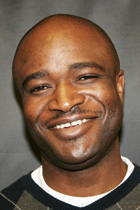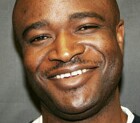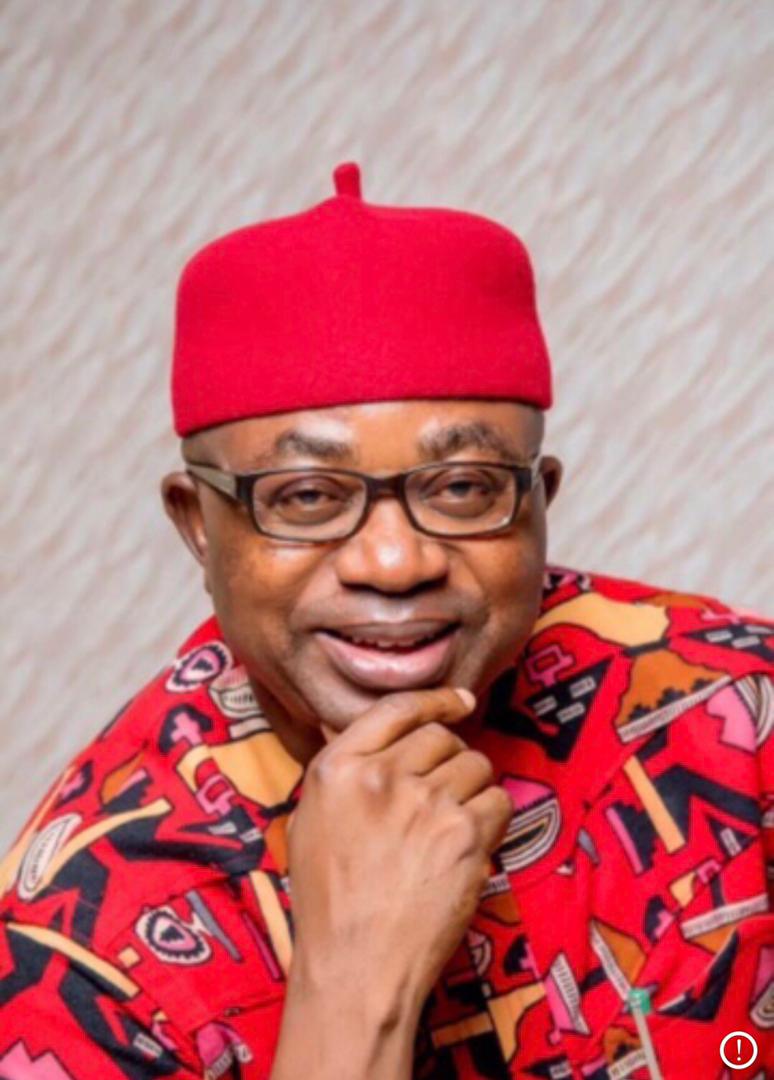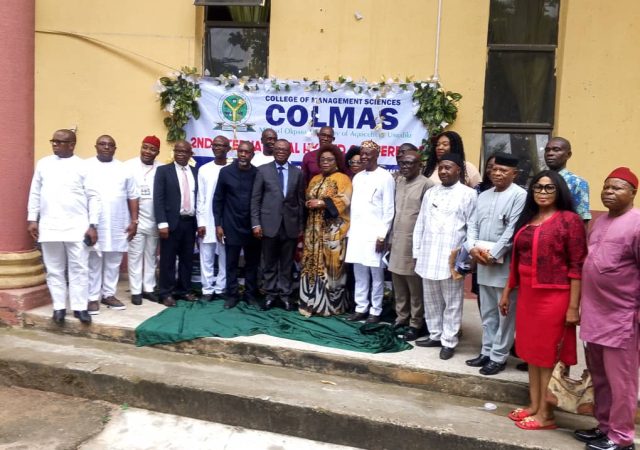
1962-63: Controversies in the house
The accuracy of census data was generally affected by shortage of qualified personnel to undertake the actual count, shortage of funds, problems with communication, such as in the riverine areas, and previous suspicions associated with what census result might be used for, mimicking experience of 1931.
This was worsened by politicians and government functionaries that put great weight on relevance of census for allocation of government amenities and the number of parliamentary seats, ostensibly turning the census exercise into a political rather than a statistical affair and in the long run rendered results unacceptable to the three regional governments that constituted the Nigerian federation (Okolo 1999).
Disturbing political influences and lingering suspicions led to the eventual rejection of the 1962 census figures. Prior to releasing the census results, the Federal Census Officer contended that ‘the figures recorded throughout the greater part of Eastern Nigeria during the present census are false and have been inflated. The figures for the five divisions of Awka, Brass, Degema, Eket, and Opobo, which have recorded increases of over 100 and 120 per cent, can certainly be rejected out of hand’. On Western Nigeria, ‘of the 62 census districts … provisional total figures are available for only five, due, in my view, to weakness in the census organisation in the Region’.
At this time in the Western region a state of emergency had been imposed by the Federal Government from May to December 1962, the regional cabinet formed by the Action Group Party was suspended, while Ministers and legislators were dismissed. ‘An Administrator assisted by political commissioners who were all new to this type of work, took charge of the Region and supervised the later stages of the census. Neither the staff nor the finance needed for the checking and efficient processing of the census data could be found .
Many of the non-civil service staff recruited by the Census Office were relieved of their posts and replaced by new ones’, on suspicion of allegiance to the Action Group. The FCO did not make any adverse comment about the conduct of census with respect to Northern Nigeria.
But complaints were leveled against the North as it emerged that as at November 1962, enumeration was on-going for an exercise that ought to have ended six months earlier. An official of the Northern People’s Congress advised that 20,000 Ibos living in the Gboko Division of Northern Nigeria had been recounted because during the census they had travelled home to Eastern Nigeria to be counted, so as to swell the population there to the disadvantage of Northern Nigeria.
Evidence of double counting was worsened by delayed release of the census figures, leading to rumours of in-office inflation.
Representatives of different political persuasions staged a walkout of federal parliament in protest as the Chief Federal Census officer again read his adverse report on 5 December 1962. Later that month, the Ministry of Information published and distributed to members of the Senate ‘One Hundred Facts People Must Know’, in which the 1962 census figures were given for Nigeria as 42 million (22 million North; 12 million East; 8 million in Western and Midwest). A national daily newspaper, the Daily Times on 30 January 1963 published 52 million (30 million North; 12 million East; 10 million West and Midwest). These two pieces of information released through federal government channels were neither officially denied nor rebutted by government, lending credence to impression held by many southerners that ‘northern politicians were continuing to inflate their own figures’.
In the backdrop of suspicion and criticism that followed regular census counts since it began in 1911, and the latest one of 1962, the Nigerian Federal Minister of Economic Development who had earlier saw it as a duty to produce an acceptable result to world audience had no option than to backtrack that:
It is useless to give out any figures to the public under the present circumstances . . . The fact is that there have been inaccuracies and under no circumstances will I release false figures. I shall do my duty and if in the end we cannot arrive at any reasonably accurate figures, as the Census Officer has suggested, there can be no alternative but to do the whole thing again
1963-64: Census re-taken
With the Prime Minister’s repudiation of the 1962 census result in February 1963, a new census was proposed for later in 1963, and the responsibility for planning and conduct was removed from regional governments. The federal government set up a central census board that was chaired by the Prime Minister. New steps taken were to allocate a larger sum of £2.5 million (up from £1.5m of 1962) to accommodate the hiring of more enumerators and inspectors, and the enumeration period limited to 4 days – November 5-8, 1963 (down from 17 days of 1962), to reduce the probability of multiple counting.
Within three months, in February 1964, provisional census figures gave Nigeria’s population as 55.7 million. New regional totals came up at the National Economic Council in Lagos in May 1964: 29.78 million North; 12.39 million East; 10.28 million West; 2.53 million Midwest; and 675,000 in Lagos. The North was again accused of inflating figures in order to dominate the political landscape, and the figures were challenged at the Federal Supreme Court by the Eastern Regional government. The case was dismissed on the technical ground that the court lacked jurisdiction to attend to the suit.
1973: After the civil war
Another census exercise was undertaken in 1973. Now under military rule, with no national elections in sight, and nation’s attention on reconciliation and reconstruction after the civil war of 1967-70, there was simply no reason to fear deliberate inflation of results of this particular census exercise. The National Census Board conducted this census from November 25 to December 2, 1973. Preparatory work to reduce or avoid pitfalls encountered in the 1962-1963 census was carried out with the aim of ensuring acceptable figures to the federal and state government. Specialised counting was done for unique groups: local police were deployed to assist enumerators to count ‘homeless persons’ on the night of November 25-26, 1973; village heads and veterinary officials familiar with location of nomads’ camps were asked to help in the enumeration of nomads and other herdsmen (Bamgbose, 2009).
But the newly released results of 79.8 million total population of Nigeria still confounded regional belief. To the consternation of Southern elites, 64% of this total belonged to the six northern states. The corollary was that Southern states were either declining or growing ever so slowly; bitter accusation of deliberate inflation was again leveled against the North. Chief Awolowo was the first national politician who labelled the 1973 figures as unreliable and publicly rejected it. The 1973 census became the ‘last straw’ factor that led to the demise of Gowon’s administration. General Murtala Muhammed who deposed General Gowon in 1975 did not permit the use of the 1973 population census.
A government report published in November 1975 (Federal Republic of Nigeria 1975) rejected the results, and recommended that the 1963 census figures should continue to be used as basis for development planning. However if we accept that the 1973 census was cancelled not because it was more defective than the 1963 census, but because of a change of government, then the data may well have been generally reliable. The figures were finally cancelled in 1975 as a sop to the South or more specifically elites of the Southwest (Ahonsi, 1988; Oluleye, 1985).
Further to this, government’s official stance on population issues was not encouraging. The Second and Third National Development Plans showcased population factor as irrelevant, noting that: the magnitude of the country’s population problem is unlikely to be such that calls for extensive emergency or panic action, or for stringent population control measures on a national scale” and “given the promising resource base of the economy, the country can through careful planning, succeed in buying time to ward off undue population pressure (Second National Development Plan 1970-1974, Section 5 of chapter 8, p.77)
Government’s official view was no different in the Third National Development Plan, 1975-1980 where it was explicitly stated that:
Although Nigeria has (by world standard) a large and rapidly growing population, these demographic factors do not appear as yet to constitute a significant or serious obstacle to domestic economic progress (Third National Development Plan, 1975-80, p.293)
The question arise, if federal government that controls the purse-strings of Nigeria’s wealth does not know the size of population it is planning to deliver social services to and is not bothered by knowledge of age structure and composition (regional characteristics) of the population it governs, then there is a fundamental problem for effective planning and delivery of social services and formulation of policies to stimulate economic growth.
By the mid- and late 1970s, international financial and development organizations had got sucked into Nigeria’s demographic debacle as they bandied and used different population growth rates, which yielded different population sizes, in their dealings with Nigeria.
These different growth rates also helped to account for inconsistencies observed in the trajectory of annual population figures of Nigeria. Population pressure led to inadequate and collapse of public infrastructure by the mid-1980s. A half-hearted attempt made at implementing a population policy stuttered to a stop by 1990 .
1991
Despite the nation’s chequered history at taking censuses, the Political Bureau set up by the Federal Government of Nigeria advised in 1987 of the need to conduct a reliable and acceptable population census. It remarked that: An overview of the Nigerian political experience since independence in 1960 shows clearly that among the many issues that have created great anxiety and brought the country to the brink of collapse has been the attempt at obtaining an accurate count of the country’s population. The potency of the issue as a source of confusion and a national discord is underscored by the fact that attempts made by civilians (1962 – 1963) and the military (1973) were greeted with the same degree of cynicism, suspicion and controversies and had to be cancelled (Political Bureau Report, 1987 ).
The decision was given legal support in Decree 23 of 1989 promulgated by the Babangida-led administration. It was based on this decree that National Population Commission (NPC) was empowered to conduct population censuses in Nigeria, among other duties. The technical and administrative arm of the new NPC comprised many functionaries that had academically assessed previous censuses (see Duru, Morah, Adekunle and others).
This group immediately embarked on Enumeration Area Demarcation (EAD) exercise on local government (LG) basis, to divide LG into units with clear physical boundaries containing 450-600 persons, and complete house listing (residential, non-residential, uncompleted building) of each EA. Residential houses were given NPC-unique identifier numbers; the number of households and number of persons per household occupying each house were used to arrive at minimum/maximum number of persons per EA. In the absence of topographical maps and costly aerial photographs, cartographers were employed to draw composite maps sketched from field visits obtained from each EA to have an extensive and comprehensive road and building map for Nigeria.
Following nationwide EAD, three pre-tests and one trial census were conducted in the run-up to 1991 census. These exercises were used to remove ambiguous questions from the questionnaire, and estimate time frame for completion of questionnaire for each interview. Census functionaries were trained, the country was divided into seven zones for effective administrative supervision and control, and seven new computer centres were created for decentralization of data processing and management. Each zone has a supervising commissioner, appointed by the federal government, administering in an area other than his/her zone of origin to avoid ethnic/regional bias. Their duties include field visits for on-the-spot control, general logistic administration, as well as articulate the needs of the NPC as they are in position to deal with highest level of government on census-related issues. The commission launched a public enlightenment program for the 1991 census in May 1990 to explain the processes, including the preparations and the technical efficiency of the program and assure Nigerians of the thoroughness of the exercise. What further engendered public confidence in pre-census activities was the music album voluntarily released by ‘General’ Kolington Ayinla to dispel superstitions associated with head-counts; he commanded large following of Fuji music in the Southwest.
High qualified manpower were employed as enumerators and supervisors, and de Facto method was adopted for the counting exercise which started on November 27, 1991. Special enumeration was done for ‘homeless persons’ midnight preceding the census. Enumeration at residences ended in November 29 in a nationwide atmosphere where there was strict non-movement of persons except for census officials. Provisional total which put the country’s population at 88.5 million was released by government on March 19, 1992, four months after the census. This figure census indicated a 23% deviation from the estimate of about 115 million population estimate projected from the 1963 census. The 1991 census total show that Nigeria’s population grew at an average annual rate of 2.1%, far below the high 3.2% that had hitherto been used by many international organizations such as the United Nations and the World Bank. The new growth rate seems more like those reported for other countries in the West African region (Okolo, 1999).
In the backdrop that results of Nigerian censuses had always been contested, the Babangida government pre-empted potential local and regional discontentment with census results by setting up arbitration tribunals, which were functioning before census exercise.
The census planning was not without hiccups. EAD was refused in some areas, for example, in some rural communities in the River Owena area bordering Ondo & Osun States. While Owena river is the physical boundary, Ondo State claimed some portion of land on other side of river; this stretch of land at the time was rented and used by farmers who hail from central parts of Osun State. These people in their judgment refused to pay tax to Ondo State government, also not to Ilesa LG of Osun State in which the land area seem to be located; the farmers would prefer to pay taxes to their LG of origin which is in central Osun State. Thus many cocoa trees were earmarked for destruction (painted in red crossed lines) allegedly by Ondo government to force farmers out of the land. On a wider perspective, Osun government maintains river Owena as the physical boundary, implying conflict with claims of Ondo State. In the sideline was NPC that needed to do pre-census EAD exercise. Finally the farmer residents preferred NPC officials from Lagos (then the seat of federal government) not NPC of Ondo or Osun to do the EAD. Such cases later went to census tribunal.
2006
The tradition of conducting census in years ending with ‘1’ could not be maintained as census 2001 was postponed almost annually for various reasons until 2006. The most notable reason was to avoid conducting it in the run-up to year 2003, which was also the year slated for nation-wide elections. The 2006 head count was held from March 21 to March 25. In the usual pre-census tradition, the NPC incorporated more contemporary technical applications to plan and conduct the 2006 census. The latest technique at this time was the use of Geographical Positioning System (GPS) and Satellite imageries to delineate out geo-referenced Enumeration Area maps, OMR/ICR/OCR machine readable forms to record information, Automated Fingerprint Identification System (AFIS) to detect where same finger prints have been used to falsify questionnaires and thereby expose cases of multiple counting, and the use of Geographic Information System (GIS) to store 2006 census data (Obasanjo, 2006).
On January 9, 2007, President Obasanjo released Nigeria’s provisional population of March 2006 as 140,003,542. Discontentment immediately followed with commentaries in national dailies such as: ‘…It is tinted with political permutations’ (Onyeka-Ben, 2007), ‘Delay in release gave room for manipulation’ (Adim, 2007), ‘Census 2006: matters arising’ (Akerele, 2007) and captions: ‘Lagos and the fallacies in national census figures’ (Kolapo and Faloseyi, 2007). Let us consider one of the examples of main bone of contention: disparity in the census results of Lagos (9,013,634) and Kano State (9,383,682). In defence of how wrong the data of Lagos was, critics argued that the World Health Organization (WHO) earlier used the result of the numbers of children it immunized in the state from year 2000 to 2006 to project a total population of about 16 million for Lagos state. In addition, if we are to base estimate on the 26000 EA of Lagos, with average population of 750, there will be 19.5 million people residing in Lagos state (also see Kolapo et al., 2007). Lagos state authorities conducted an ‘independent’ census and arrived at 17,552,942. The state governor suggested:
We can afford a recount throughout the country. We want a recount in Lagos State. This is the height of corruption: falsifying census figures just to please some people. No amount of adjustment done to the figure can make it right. The figure is totally rejected. We have enough support and funding from the United Nations and the European Union. So let’s have a recount (Tinubu, 2007).
Arguments against the figures released for Kano State (and the Northern states in general) hinged on a litany of cycle of violence that generated thousands of internally displaced persons and claimed many lives since the 1990s. They include mayhem in: Bauchi state 1991; Junkun and Tiv conflicts in Taraba state 1991 and 2001; Chamba-Kuteb crisis, Taraba state 2000; Damboa religious crisis, Borno state 2000; communal clashes, Nasarawa state 2001; Bongoro crisis, Bauchi state 2001; Plateau state 2001 and 2004; Kano riots 2001; crisis of all sorts in Kaduna state 1992, 2000, and 2002; inter-ethnic clashes Adamawa state 2003; chaos of different sorts in Kano state 1991, 1999, 2001, and 2004; the Kwande, Benue state political crisis in 2004 . Bamgbose (2009) concluded that crises at such level of annual occurrence should have decimated the northern population in proportions similar if not more than millions of death the East suffered during the 1967-70 civil war. In addition was the perceived migration of people from the north to the south in search of greener pastures, literarily, which ought to have reduced the number of people in the north and increased the number of people in the south.
References
Adim, F. (2007, January 12). Delay in release gave room for manipulation. Lagos, Nigeria: The Guardian, 27. In, Bamgbose, B. J. (2009). Falsification of population census data in a heterogeneous Nigerian state: The fourth republic example. African Journal of Political Science and International Relations, 3(8), 311-319.
Afolayan, A. A., (1982). Population. In A. L. Mabogunje (ed.), Geographical Perspective on Nigerian Development. Ibadan, Nigeria: Heinemann Publications.
Ahonsi, B. A. (1988). Deliberate falsification and census data in Nigeria. African Affairs, 87(349), pp 553-562.
Akerele, T. (2007, January 15). Matters arising. Lagos, Nigeria: The Guardian, 65
Aluko, S.A. (1965). How Many Nigerians? An Analysis of Nigeria’s Census Problems, 1901-63. The Journal of Modern African Studies, 2, 371-392. Retrieved from http://www.jstor.org/stable/159549
Arowolo, O. O. (1981). Designing the Next Census for Nigeria. In, Population Data Assessment in Nigeria, Population Association of Nigeria, PAN—Proceedings No. 1, Benin City, p. 43.
Arowolo, O., and Daramola, 0. (eds.) (1982). Philosophy of Population Census in Nigeria. Lagos: National Population Commission
Ballard, J.A., (1971). Administrative origins of Nigerian Federalism. African Affairs 70(279), 333-348.
Bamgbose, B. J. (2009). Falsification of population census data in a heterogeneous Nigerian state: The fourth republic example. African Journal of Political Science and International Relations, 3(8), 311-319.
Barbour, K. M. and Prothero, R. M. (Eds.) (1961). Essays on African Population. London.
Diamond, Larry Jay, 1998. Class, ethnicity and Democracy in Nigeria: the failure of the First Republic, Syracuse University Press, Syracuse, New York 13244-5260
Duru, R. C., (1968). Problems of Data Collection for Population Studies in Western Nigeria. In, J.C. Caldwell and C. Okonjo (Eds.), The Population of tropical Africa. London: Longmans, pp. 71-72.
Hauser, P. (1975). Social Statistics in Use. New York: Russell Sage.
Iro, Post-Independence Population Census Data in Nigeria, p. 14. Cited in, Ahonsi, B. A. (1988). Deliberate falsification and census data in Nigeria. African Affairs, 87(349), pp 553-562.
Kolapo, Y. and Faloseyi, M. (2007, February 6). Lagos and the fallacies in national census figures. Lagos, Nigeria: The Punch, 3.
Kolapo, Y., Obasola, K., and Ibona, J. (2007, February 6). Lagos protests census results, heads for tribunal. Lagos, Nigeria: The Punch, 2.
Macleod-Smith, A. M., (1946). The collection of statistics as it affects the development programme. A Ten-Year Plan for Development and Welfare for Nigeria, 1946. Government Printer, Lagos. Appendix XXI, pp. 130-131
Makinwa, P. K. (1985). Population Data: The Importance of Census, Sample Survey and Vital Registration System. Population Education Monograph, 15, Lagos: Nigerian Educational Research Council.
Morah, B. C., Adekunle, C. F. and Adekunle, J. A. (1981). Evaluation of Past and Recommendations with Respect to Population Counts in Nigeria. In, H. Chojaacka, P. Olusanya and F. Ojo (Eds.), Population and Economic Development in Nigeria in the Nineteen Eighties. United Nations, TCD/SEM, 81/2, New York, pp. 14-16.
Nigeria, (1970). Second National Development Plan, 1970-74. Lagos, Nigeria: Ministry of Information.
Nigeria, (1975). Third National Development Plan, 1975-80. Lagos, Nigeria: Ministry of National Planning.
Obasanjo, O., (2006, March 21). Census is indispensable to the nation’s quest of sustainable development. The Guardian, 9.
Obasi, N. (1992, March 22). Census ‘91: Myths Exploded, Myths Sustained. Nigerian Sunday Concord, 15-17.
Ogunlesi, T. O., (1968). Before and After a Population Census in Nigeria: a physician’s experience. In, J.C. Caldwell and C. Okonjo (Eds.), The Population of tropical Africa. London: Longmans, pp. 79-82
Oka Obono and Elizabeth Omoluabi, 2014, Technical and political aspects of the 2006 Nigerian population and housing census, African Population Studies Vol 27, 2 Supp (Mar 2014), pp. 249-262
Okafor, S., (1981). Indirect Rule: The Development of Central Legislative in Nigeria. Lagos, Nigeria: Nelson.
Okolo, A. (1999). The Nigerian Census: Problems and Prospects. The American Statistician, 53(4), 321-325. Retrieved from http://www.jstor.org/stable/2686050
Okonjo, C., (1968). A Preliminary Medium Estimate of the 1962 mid-year Population of Nigeria. In, J.C. Caldwell and C. Okonjo (Eds.), The Population of tropical Africa. London: Longmans, pp. 79-82
Oluleye, J.J. (1985). Military Leadership in Nigeria 1966 – 1979. Ibadan, Nigeria: University Press Limited.
Olusanya, P. O. (1989a). Population and Development Planning in Nigeria. In T. Tamuno, and Atanda J.A. (Eds.), Nigeria since Independence The First 25 years Government and Public Policy. Ibadan, Nigeria: Heinemann.
Olusanya, P. O., (1989b). Evolution and status of family planning in Nigeria. In, Developments in family planning policies and programmes in Africa. Proceedings of a Colloquium on the Impact of Family Planning in Sub-Saharan Africa: Current Issues and Prospects. Regional Institute for Population Studies, University of Ghana (Legon), 1989. pp 408-450.
Onyeka-Ben, V. (2007, January 12). It is tinted with political permutations. Lagos, Nigeria: The Guardian, 28. In, Bamgbose, B. J. (2009). Falsification of population census data in a heterogeneous Nigerian state: The fourth republic example. African Journal of Political Science and International Relations, 3(8), 311-319.
Orubuloyo, I. O., (1989). Population Policy in Nigeria. In, Developments in family planning policies and programmes in Africa. Proceedings of a Colloquium on the Impact of Family Planning in Sub-Saharan Africa: Current Issues and Prospects. Regional Institute for Population Studies, University of Ghana (Legon), 1989. pp 451-472
Shryock, H. S., and Siegel, J. S. (1973). The Methods and Materials of Demography. Washington, DC: U.S. Department of Commerce, Bureau of the Census
Tinubu, B. A. (2007, February 6). The falsification of Lagos Census figures being the test of a report by the Lagos State Government. Lagos, Nigeria: The Punch, 3
Udo, R. K. (1968). Population and Politics in Nigeria. In, J.C. Caldwell and C. Okonjo (Eds.), The Population of tropical Africa. London: Longmans, p. 97.
United Nations (1967). Principles and Recommendations for the 1970 Population Censuses. Statistical Papers Series. M(44), 1-3.
Yesufu, The Politics and Economics of Nigeria’s Population Census, pp. 108-111. Cited in, Ahonsi, B. A. (1988). Deliberate falsification and census data in Nigeria. African Affairs, 87(349), pp 553-562
World Bank World Development Indicators, International Financial Statistics of the IMF Global Insight, and Oxford Economic Forecasting, as well as estimated and projected values developed by the Economic Research Service (ERS). http://www.ers.usda.gov/Data/Macroeconomics/Data/HistoricalRealGDPValues.xls
See Olusanya (1989a), Population and Development Planning in Nigeria
The trend for Lagos continued thus: 100000 (1921), 126000 (1931), 272000 (1950-1), 675000 (1963), rising to over 9 million (310 times the total of 1871) in 2006.
Selbourne Committee was appointed in 1898 to consider the future administration of Nigeria recommended in 1906 a merger of Lagos colony with the protectorate of Southern Nigeria (Okafor, 1981; Ballard, 1971).
Bamgbose (2009) citing Everybody’s Guide (1990)
Till date there is widespread belief that Emirs and leading Muslim leaders in Northern Nigeria still object to the enumeration of their wives, particularly those in purdah and in harems
Ahonsi 1988 dubbed this impression erroneous, without noting the knock-on effect of the tax riots in Eastern Nigeria
The enumerator administers questionnaire directly to the individual
170,000 children were expected to reach the ages of six and seven in 1955. Upon completion of registration in December 1954, 392,000 children of school going age were discovered (230% more than planned for), embarrassing the regional government
Directed by Dr J. F. Ade Ajayi
See Aluko (1965) for a more comprehensive listing
Dr. Akinyinka Akinyoade is a Senior Researcher at African Studies Centre,
Leiden University, Netherlands
a.akinyoade@asc.leidenuniv.nl










